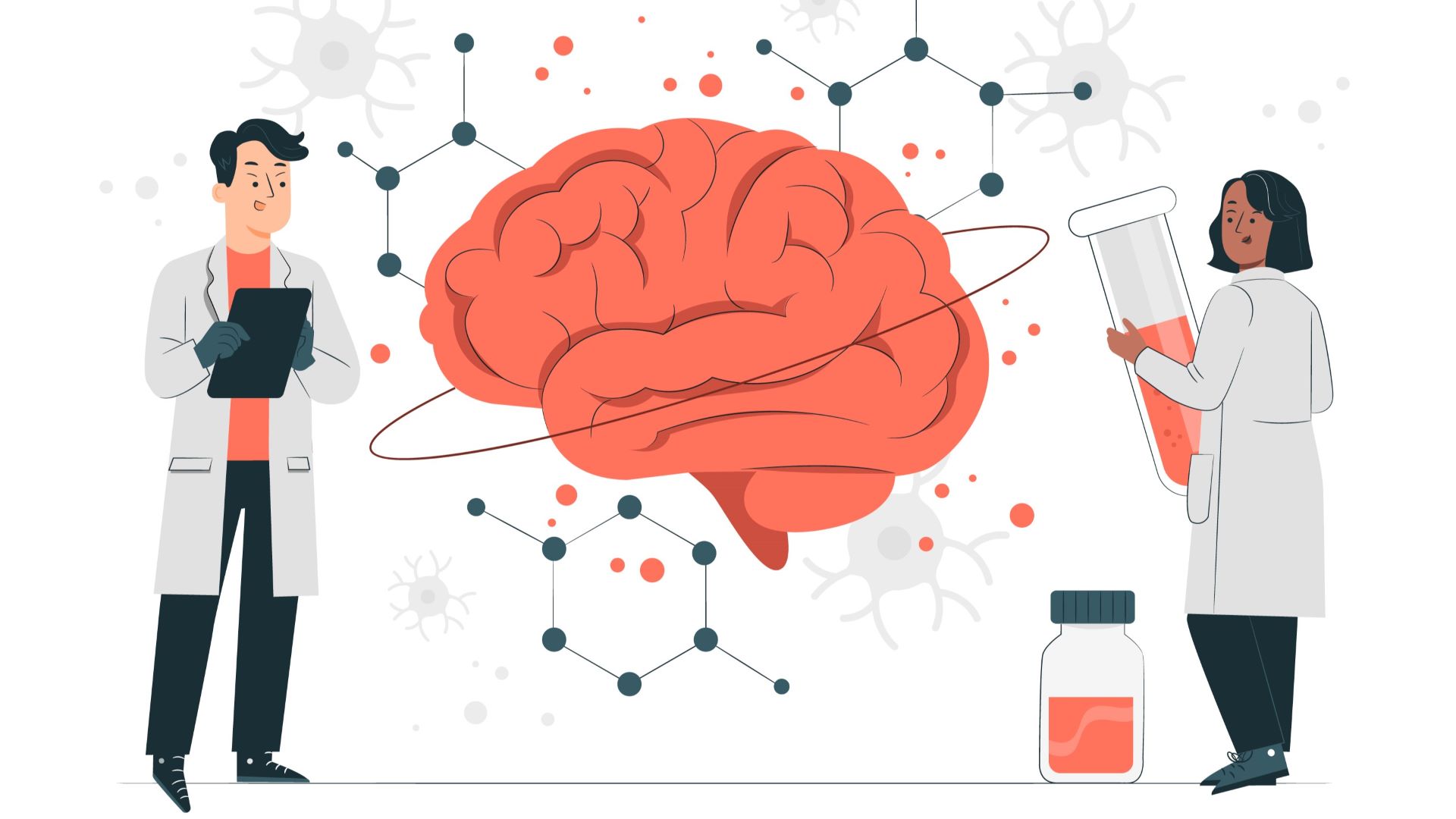The Lamen
Beta-amyloid plaques, Explained: The mysterious Alzheimer’s causing clumps

A single brain scan could often be enough for an Alzheimer’s diagnosis, with scientists often looking for beta-amyloid plaques as a primary risk factor for a future diagnosis of the condition.
Photo: storyset/Freepik
The rapidly aging population often struggles with memory. It may be a forgotten name, or difficulty coming up with the right word — often nothing more than a minor annoyance. But in some 10 percent occurrences, this may be a sign to finally visit a doctor.
Alzheimer’s approaches silently at first, but by the time you can actually notice your failing memory, not much can be done. Alzheimer’s, or rather its primary drives, have deeply rooted themselves into your brain by then — and the ones that have become our favorite culprits are these beta-amyloid proteins.
While controversy looms over what actually causes Alzheimer’s disease, clumps of toxic beta-amyloid proteins are often the most common hallmark — believed to trigger a chained reaction that results in irreversible loss of cognition.
- The idea of the “amyloid cascade hypothesis” came forward nearly three decades back, more than 80 years after Alois Alzheimer first presented the features of this “peculiar severe disease of the cerebral cortex.”
- Amyloid plaques actually start forming years before the signs of Alzheimer’s become obvious — with high levels of beta-amyloid detected nearly two decades before even mild cognitive impairment (MCI) sets in.
As an obvious consequence of this perceived breakthrough, billions of dollars were poured into creating treatments that could clear these plaques or prevent them from clumping in the first place — but almost all clinical trials met a disheartening end.
How do beta-amyloid plaques form?
Amyloid-β molecules are produced through the breakdown of the amyloid precursor protein (APP), a membrane protein found in abundance in the synapses of neurons. The beta-amyloid units hence formed arrange themselves into different types of assemblies — like fibrils that form the insoluble plaques, and oligomers that may spread throughout the brain.
Said amyloid oligomers are considered the most toxic form of beta-amyloid — laying the seeds of neuronal damage.

Beta-amyloid proteins (brown) clump together to form plaques. However, the deposition of these plaques has only been weekly related to the degree of dementia — remaining a continual puzzle in the field of AD.
Photo: National Institute on Aging
Beta-amyloid plaques are hidden attackers.
“Her behavior showed all the signs of complete helplessness,” wrote Alois Alzheimer in his report on the discovery of Alzheimer’s disease. “She is completely disoriented in time and space,” he added.
The 50-year-old woman, Auguste D., experienced symptoms like sleep disorders, memory disturbances, aggressiveness, and crying — progressing rapidly and with increasing intensity. An autopsy after her death revealed “senile plaques” that we now recognize as fibrous plaques and neurofibrillary tangles.
How these protein clumps are damaging your neurons has not been understood completely, but current research suggests that they primarily crowd synapses — which are connections between nerve cells that allow for the complex transfer of information.
These plaques disrupt synaptic function in a number of ways: reducing their number and plasticity, as well as resulting in abnormal synapses. As Alzheimer’s progresses, this results in significant shrinkage in brain volume and neuronal death.
Beta-amyloid plaques are believed to disrupt brain function and cause symptoms like memory loss by multiple mechanisms, including:
- damaging the blood-brain barrier — a “tight wall” that prevents harmful molecules from entering the brain
- brain inflammation
- immune or metabolic dysfunction
However, long before the symptoms of cognitive impairment even begin to emerge, the accumulation of beta-amyloid plaques has long continued in the brain.
Debilitated progress fuels alternate theories.
A scarcity of substantial results has led researchers to look for other meaningful results that might explain what drives Alzheimer’s disease, and whether the amyloid cascade has just been a preliminary explanation of a more complex chain of events that trigger dementia.
“
Whenever a theory appears to you as the only possible one, take this as a sign that you have neither understood the theory nor the problem which it is intended to solve.
”
— Karl Popper, Philosopher
Alternative studies have presented different culprits that might be causing Alzheimer’s disease, and even some vague theories like “accelerated aging” find their way in. Scientists have presented common viruses, lysosomal storage, imbalance of the gut microbiome, and even a poor sleeping pattern as possible culprits – indicating that several factors might be at play.
Does this mean that the amyloid cascade hypothesis is largely insignificant? Are manipulated research results the reason these proteins get all the limelight? Not likely.
Toxic, insoluble masses in the brain are bound to have some dire consequences, but increasing skepticism suggests that amyloid proteins are not Alzheimer’s primary drivers — especially when almost every attempt targeting them to slow the disease has failed in larger trials.